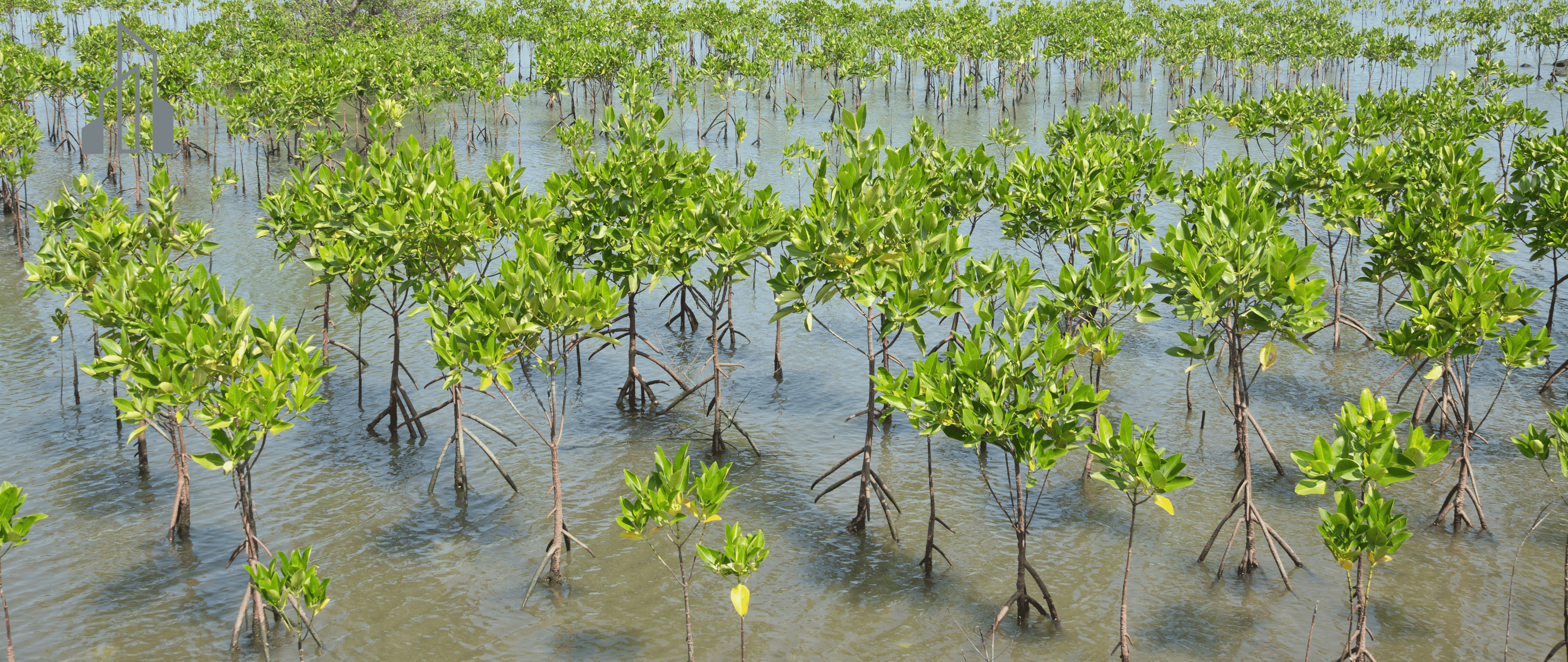Mangrove

Mangrove Plants
Mangrove Trees
Mangrove trees are shrubs and trees that grow in coastal wetlands in tropical and subtropical regions. They are uniquely adapted to thrive in brackish water—a mix of salt and fresh water. Mangroves are vital not only to coastal ecosystems but also to the global environment, offering both ecological and economic benefits:
Ecological Importance of Mangrove Trees:
Storm Protection:
Mangrove trees can reduce the impact of tsunamis and coastal storms by acting as natural buffers that absorb wave energy. They also help in building and reinforcing shorelines.Biodiversity Support:
Mangroves serve as habitats for a wide variety of marine and terrestrial species, including birds, reptiles, and fish.Water Purification:
Mangroves improve water clarity and quality through their dense root systems, which help filter pollutants and sediments.Carbon Sequestration:
Mangrove trees effectively capture and store carbon dioxide, possessing a high capacity for carbon storage. This helps achieve global goals aimed at reducing climate change.Resilience and Sustainability:
Mangroves have remarkable abilities to filter pollutants, prevent coastal erosion, and serve as safe havens for diverse wildlife. They represent resilience and regeneration—planting just one mangrove tree can positively impact the planet and pave the way for a greener, more sustainable future.
Preserving mangroves as part of one of the world’s most critical ecosystems strengthens ecological resilience and combats the harmful effects of climate change.Economic Importance of Mangrove Trees:
Tourism:
Mangrove forests have strong potential to attract eco-tourists who value the natural beauty and biodiversity of coastal ecosystems. This can create economic opportunities for local communities through tourism-related activities such as guided tours and mangrove reforestation programs.Support for Fisheries:
Mangroves contribute to sustainable fisheries by providing habitats for commercially important species, including shellfish and fish. They serve as nurseries and feeding grounds, making them essential for the livelihoods of local fishing communities.


